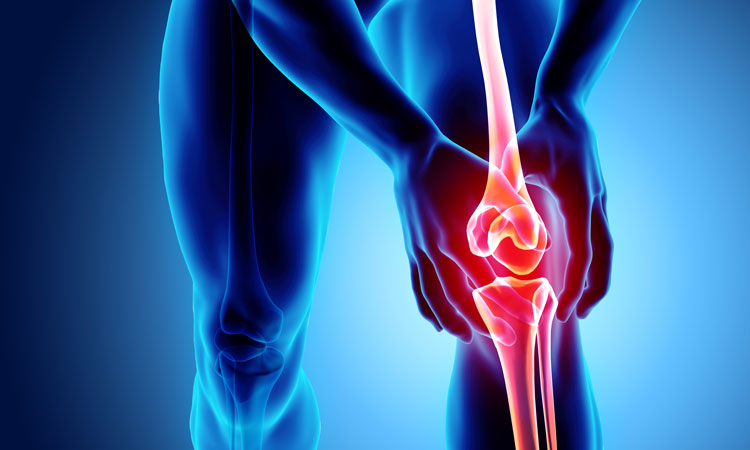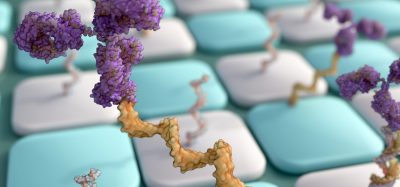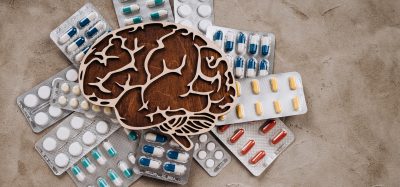New hydrogel tech shows promise for treating post-traumatic osteoarthritis
Posted: 8 April 2025 | Drug Target Review | No comments yet
Researchers from Mass General Brigham have developed a hydrogel to improve drug delivery for post-traumatic osteoarthritis (PTOA), which ensures sustained medication release, even under joint movement, addressing a major challenge in current treatments.


Post-traumatic osteoarthritis (PTOA) is a debilitating condition that develops in joints following an injury. Current treatment options primarily focus on symptom relief rather than halting or reversing disease progression. While emerging therapies have shown potential in preclinical studies, one of the significant challenges remains effective drug delivery into the joint, a dynamic environment that is subject to regular mechanical stress.
A breakthrough in drug delivery
Researchers at Mass General Brigham have developed an innovative hydrogel designed to enhance drug delivery for treating PTOA. This new hydrogel offers sustained drug release even under continuous joint movement. In preclinical studies simulating joint stress akin to running, the hydrogel demonstrated promising results, making it a potential breakthrough for treating PTOA in physically active individuals. These findings were recently published in the Proceedings of the National Academy of Sciences of the United States of America (PNAS).
Overcoming the challenges of joint drug delivery
“Disease-modifying drugs could slow, halt, or reverse PTOA, but rapid drug clearance from joints limits their effectiveness. Hydrogels can extend drug release but often degrade under mechanical stress, such as from exercise,” said Dr Nitin Joshi, associate bioengineer in the Department of Anesthesiology, Perioperative, and Pain Medicine at Brigham and Women’s Hospital (BWH) and lead and co-senior author of the study.
Disease-modifying drugs could slow, halt, or reverse PTOA, but rapid drug clearance from joints limits their effectiveness.
Recognising these limitations, the research team developed a hydrogel capable of continuously releasing medication without being compromised by mechanical stress. “We designed a hydrogel that maintains drug release even under movement, ensuring prolonged therapeutic effects,” said co-senior author Dr Jeffrey Karp, Distinguished Chair of Anesthesiology at BWH and Professor of Anesthesia at Harvard Medical School.
The science behind the hydrogel
The study, funded by the National Institutes of Health, utilised triglycerol monostearate (TG-18), a commonly used food additive, to create the hydrogel. In a mouse model, researchers found that this material allowed the hydrogel to be self-healing, as it liquefied under mechanical stress and then reformed instantly afterwards. This property enabled stable and extended release of a disease-modifying drug, which significantly reduced cartilage damage while also improving joint lubrication.
Implications for PTOA treatment
“Our hydrogel technology could revolutionise PTOA treatment by reducing the need for frequent injections, slowing disease progression, and potentially delaying or preventing surgery,” said co-senior author Dr Joerg Ermann, MD, an attending rheumatologist in the Division of Rheumatology, Inflammation, and Immunity at BWH and an assistant professor of medicine at Harvard Medical School. “This advancement is particularly important for athletes, military personnel and young adults recovering from joint injuries, who need effective therapies that support an active lifestyle.”
Future prospects
The development of this hydrogel represents a significant step towards more effective and long-lasting treatment options for PTOA patients. As further studies are conducted, this promising technology may offer a transformative approach to joint injury management, ultimately improving the quality of life for those affected by PTOA.
Related topics
Drug Delivery, Drug Development, Pharmacology, Regenerative Medicine
Related conditions
Osteoarthritis, Post-traumatic osteoarthritis
Related organisations
Brigham and Women's Hospital (BWH), Harvard University








